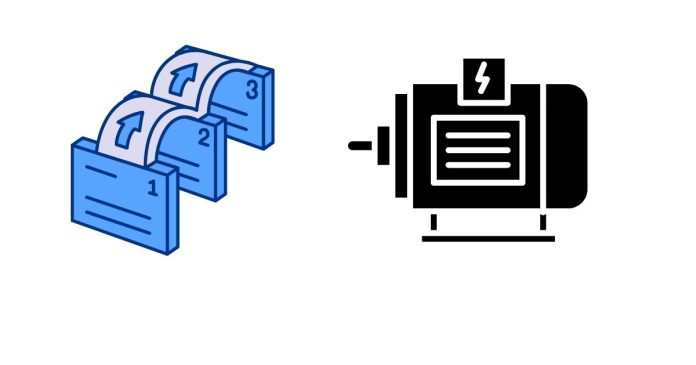Single-phase induction motors are commonly used in domestic and light industrial applications. They are classified based on the way they produce the rotating magnetic field, which is essential for motor operation.
Types of single-phase induction motors:
1. Split-Phase Induction Motor
Working Principle: In a split-phase motor, there are two windings: a main winding and an auxiliary winding (or starting winding), which are connected in series with a capacitor or through a resistance.
Operation: The auxiliary winding is designed to create a phase difference, which helps start the motor. After the motor starts, the auxiliary winding is disconnected from the circuit.
Applications: Light-duty applications such as fans, blowers, and small pumps.
Characteristics:
Low starting torque.
Moderate efficiency.
Simple construction and cost-effective.
2. Capacitor-Start Induction Motor
Working Principle: This motor has two windings: a main winding and a start winding, with a capacitor connected in series with the start winding.
Operation: The capacitor helps to increase the starting torque. After the motor reaches a certain speed, a centrifugal switch disconnects the starting winding, and the motor continues to run on the main winding.
Applications: Motors used in machines requiring high starting torque, such as compressors, air conditioners, and small machinery.
Characteristics:
High starting torque.
Good efficiency.
The capacitor improves performance but adds to the cost and complexity.
3. Capacitor-Run Induction Motor
Working Principle: Similar to the capacitor-start motor, but the capacitor remains connected to the start winding even after the motor starts.
Operation: The capacitor helps improve both starting and running performance. Since the capacitor stays in the circuit during operation, the motor operates more efficiently.
Applications: Fans, blowers, air conditioners, and other applications that run continuously.
Characteristics:
Higher efficiency than split-phase and capacitor-start motors.
Lower starting torque than capacitor-start motors.
Capacitor remains in the circuit, improving performance.
4. Permanent-Split Capacitor (PSC) Motor
Working Principle: In this type, the capacitor is permanently connected in series with the start winding and remains in the circuit during the entire operation of the motor.
Operation: The PSC motor has a simpler design and does not require any switching mechanism. The capacitor aids in providing a phase shift for both starting and running conditions.
Applications: Applications that require continuous operation, such as fans, pumps, and small appliances.
Characteristics:
Low starting torque.
Low maintenance due to the absence of a centrifugal switch.
Suitable for light-duty and continuous-duty applications.
5. Shaded Pole Induction Motor
Working Principle: This motor is characterized by a unique construction where a part of the motor’s stator winding is “shaded” using a copper ring, creating a rotating magnetic field in a simple manner.
Operation: The shaded poles create a weak rotating magnetic field that is sufficient for starting and running the motor. The construction is simple and robust.
Applications: Low-torque applications such as small fans, toys, and small electric appliances.
Characteristics:
Very low starting torque.
Simple and cheap construction.
Low efficiency.
6. Universal Motor
Working Principle: Though primarily used with alternating current (AC), universal motors can also run on direct current (DC). These motors are similar to series-wound motors and provide high starting torque.
Operation: The universal motor works by creating a magnetic field using both stator and rotor windings. It is capable of high speeds, making it versatile for various tasks.
Applications: Used in vacuum cleaners, mixers, drills, and small power tools.
Characteristics:
High starting torque.
High speed.
Can run on both AC and DC.
These motors are typically chosen based on the specific torque and efficiency requirements of the application, as well as cost considerations.


